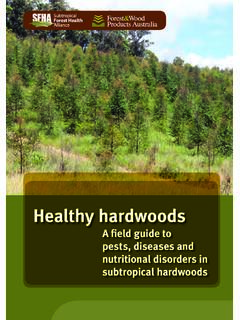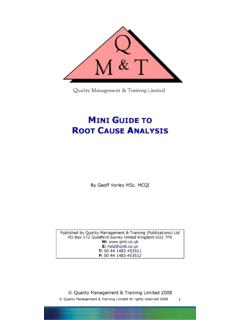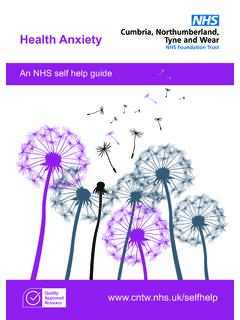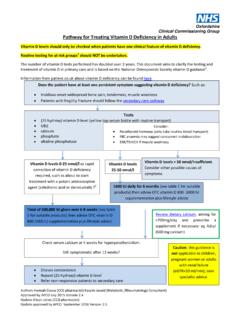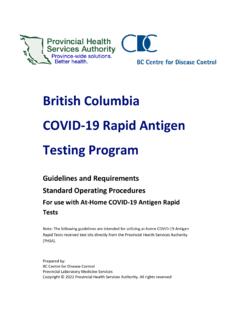Transcription of Mango information kit
1 Mango information kit Reprint information current in 1999. REPRINT information PLEASE READ! For updated information please call 13 25 23 or visit the website This publication has been reprinted as a digital book without any changes to the content published in 1999. We advise readers to take particular note of the areas most likely to be out-of-date and so requiring further research: Chemical recommendations check with an agronomist or Infopest Financial information costs and returns listed in this publication are out of date. Please contact an adviser or industry body to assist with identifying more current figures. Varieties new varieties are likely to be available and some older varieties may no longer be recommended. Check with an agronomist, call the Business information Centre on 13 25 23, visit our website or contact the industry body.
2 Contacts many of the contact details may have changed and there could be several new contacts available. The industry organisation may be able to assist you to find the information or services you require. Organisation names most government agencies referred to in this publication have had name changes. Contact the Business information Centre on 13 25 23 or the industry organisation to find out the current name and contact details for these agencies. Additional information many other sources of information are now available for each crop. Contact an agronomist, Business information Centre on 13 25 23 or the industry organisation for other suggested reading. Even with these limitations we believe this information kit provides important and valuable information for intending and existing growers.
3 This publication was last revised in 1999. The information is not current and the accuracy of the information cannot be guaranteed by the State of Queensland. This information has been made available to assist users to identify issues involved in the production of mangoes. This information is not to be used or relied upon by users for any purpose which may expose the user or any other person to loss or damage. Users should conduct their own inquiries and rely on their own independent professional advice. While every care has been taken in preparing this publication, the State of Queensland accepts no responsibility for decisions or actions taken as a result of any data, information , statement or advice, expressed or implied, contained in this publication. Problem Problem solver 1.
4 SOLVER. Every crop will inevitably have a problem or two. The key to dealing with problems is prompt identi cation, and where appropriate prompt treatment. This section helps you with both of these decisions. The common problems are shown in a series of pictures, grouped according to the main symptom . From the contents, nd the symptom that best ts your problem. On that page you will nd the causes and solutions . Contents Leaves Spots or marks on leaves .. 2 3. White patches on leaves .. 3. Distorted leaves .. 4. Holes in leaves .. 4. Raised lumps on leaves .. 4. Discoloured leaves .. 5. Chewed leaves .. 5. Yellow leaves .. 6. Brown tips and edges on leaves .. 6. Shoots Young shoots wilted .. 6 7. Tree Trees die .. 7. Flowers Spotting and blackening of in orescences .. 7 8. Flowers webbed together.
5 8. Fruit Small fruit drop off .. 9. Green fruit 9. Spots and marks on green 10 11. Spots and marks on ripening fruit (preharvest) .. 11 12. Internal breakdown and discolouration .. 12 13. Marks on the fruit skin .. 14 16. Fruit stays green when ripe .. 16 17. Ripe fruit rots .. 18 20. Mango 2 Problem solver Spots or marks on leaves Anthracnose Cause. The fungus Colletotrichum gloeosporioides. This disease is most severe during wet weather. Solution. Minimise anthracnose problems by pruning to open the canopy to allow quicker drying of foliage and better spray penetration. Remove dead branches from the tree. Chemical control measures are aimed at preventing the infection of fruit rather than leaves, but fruit sprays will protect the new shoots at the same time. Spray from flowering with an appropriate chemical from the Prob- lem solver handy guide.
6 Timing of sprays is dependent on weather conditions. Bacterial black spot The margins of black spot lesions are raised, with the edges defined by leaf veins. Inset: close-up of a lesion. Cause. The bacterium Xanthomonas campestris. This disease can be severe in windy areas. The main cause of new infection is from planting diseased trees. Solution. This disease requires a sustained long-term spray program with protectant fungicides to achieve effective control. Prevent initial infection by not planting diseased trees and providing adequate wind protection. Follow a control program using an appropriate chemical from the Problem solver handy guide. Leafminer The surface of the leaf becomes partially detached, giving it a blistered appearance. Cause. Insects from the Acrocercops group feeding under the leaf surface.
7 Solution. Damage to older trees is usually insignificant, but control measures may be needed for young trees or trees that have just been topworked. Spray with an appropriate chemical from the Problem solver handy guide whenever fresh damage is observed. Insecticide sprays to control Mango scale and tipborer will also control leafminer. Mango Problem solver 3. Spots or marks on leaves Mango scab Damage on older leaves shows as spotting. Cause. The fungus Elsino mangiferae. Free moisture and high humidity favour the development of this disease. Solution. Mango scab can be a problem in very young trees. If a regular fungicide spray program is used to con- trol anthracnose, sprays to control scab should not be required. Protectant fungicide applications should start when inflorescences emerge and continue through early fruit set.
8 Spray with an appropriate chemical from the Problem solver handy guide. Mango scale Note the large scales (female); elongated scales (male). Cause. The insects Aulacaspis tubercularis and Phenacaspis dilatata. Solution. There are some effective natural insect preda- tors of scale, so scale problems can be aggravated by heavy insecticide use. To control scale, apply full cover sprays after pruning and when trees are flushing in February and March. Spray again in spring, no later than four weeks from harvest. Spray with an appropriate chemical from the Problem solver handy guide. Pruning the trees to improve spray penetration will help to minimise problems. Algal spot Cause. Several epiphytic types of green algae. The problem is worst in very wet and humid conditions. Solution.
9 Epiphytic algae cause little harm to Mango trees and do not warrant the use of specific control measures. Pruning the trees to improve sunlight penetration and ventilation can help to reduce algal spot. White patches on leaves Powdery mildew Young leaves are covered with a white powdery growth. Cause. The fungus Oidium spp. Solution. Powdery mildew control on leaves is not war- ranted. Sprays to control blossom blight or anthracnose on inflorescences will also control powdery mildew. Mango 4 Problem solver Distorted leaves Herbicide damage Leaves are thickened and can have a distorted, elongated, strap-like appearance. Cause. Drift of herbicide spray containing glyphosate onto leaves of young trees. Solution. When spraying with herbicides protect young trees to stop drift onto them.
10 Spray at low pressure to avoid misting. Mango scab Leaves are distorted only when the disease affects fresh growth. Cause. The fungus Elsino mangiferae. Free moisture and high humidity favour development of this disease. It can be a problem in very young trees in nurseries. Solution. If conditions are conducive to fungal growth protect trees with a protectant fungicide to protect new shoot growth. Spray with an appropriate chemical from the Problem solver handy guide. Holes in leaves Boron de ciency Cause. Insufficient boron in the soil. Solution. Get a leaf tissue analysis done to confirm your diagnosis and apply the recommended rate of boron to correct the deficiency. Raised lumps on leaves Pink wax scale Black sooty mould fungi are often associated with this pest. Cause. The insect Ceroplastes rubens.


